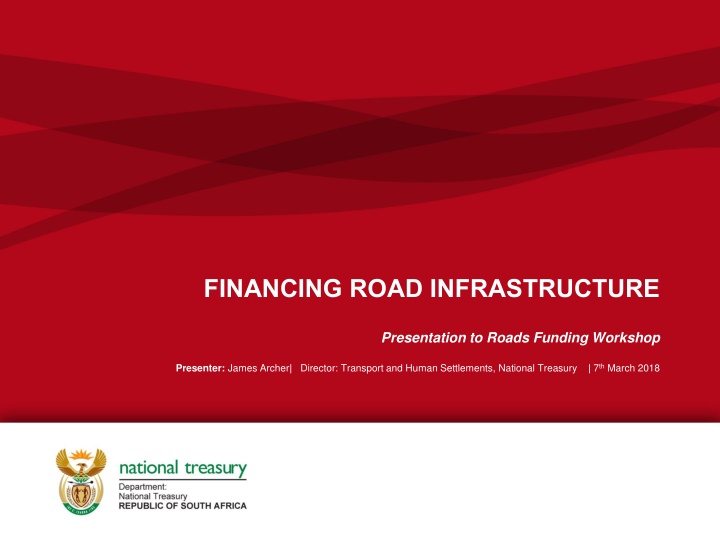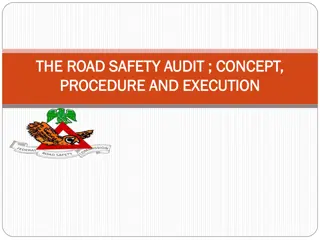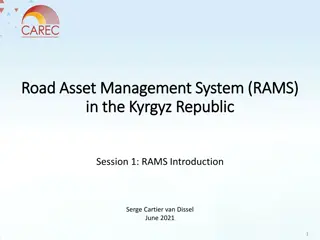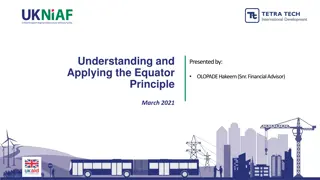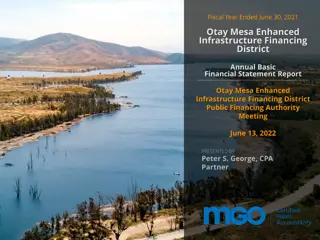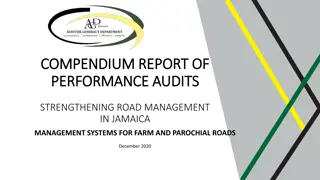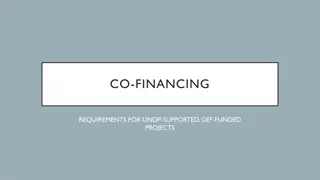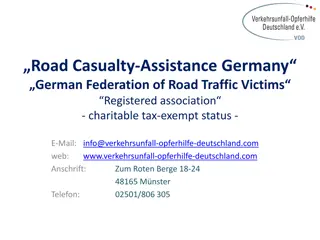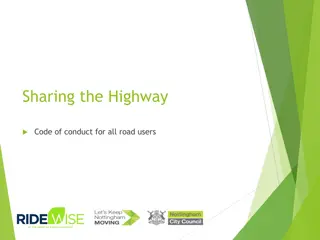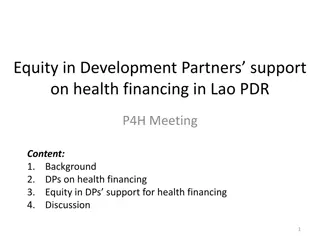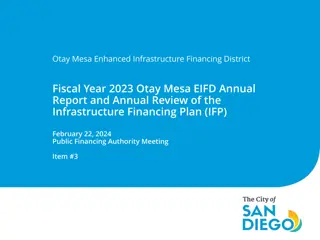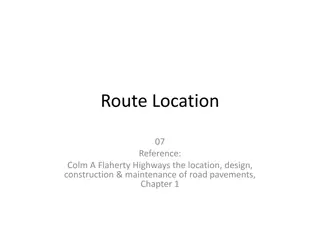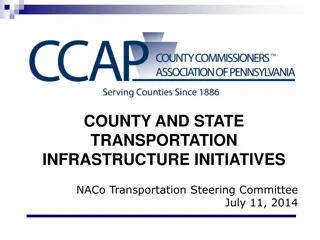Financing Road Infrastructure: Key Considerations and Strategies
Road infrastructure financing involves assessing public sector revenue sources, selecting appropriate forms of taxation, ensuring revenue adequacy, and addressing equity considerations based on geography and ability to pay. Key factors include stability of revenue, response to inflation, fairness in distribution, and impact on economic growth and efficiency. The presentation highlights the importance of balancing revenue needs with taxpayer burden and ensuring equitable investment in road infrastructure.
Download Presentation

Please find below an Image/Link to download the presentation.
The content on the website is provided AS IS for your information and personal use only. It may not be sold, licensed, or shared on other websites without obtaining consent from the author.If you encounter any issues during the download, it is possible that the publisher has removed the file from their server.
You are allowed to download the files provided on this website for personal or commercial use, subject to the condition that they are used lawfully. All files are the property of their respective owners.
The content on the website is provided AS IS for your information and personal use only. It may not be sold, licensed, or shared on other websites without obtaining consent from the author.
E N D
Presentation Transcript
FINANCING ROAD INFRASTRUCTURE Presentation to Roads Funding Workshop Presenter: James Archer| Director: Transport and Human Settlements, National Treasury | 7th March 2018
Public sector revenue sources User charges Specific taxes General Taxes 2 2
Considerations for selecting form of taxation for roads Compared to needs Stability of revenue over time Response to inflation Potential for needed increases Adequacy Fairness with respect to the ability to pay and benefits received Distribution of wealth, vertical equity to ensure that those with a greater ability to pay for services do so Equity in relation to geographic area Equity In relation to paying costs imposed on others Better decisions on travel and investment Creating disincentives for unnecessary travel Enabling economic growth Efficiency Administrative ease Compliance and enforcement costs, including evasion of cost potential Impact on investment Simplicity 3 3
1. Revenue adequacy Taxes should be just-enough to generate revenue required for provision of essential public services. Fuel Sales Volumes (megalitres) 30 000 25 000 20 000 Thousands 15 000 Considerations: Elasticities of demand and revenue buoyancy 10 000 5 000 - 2012 2013 2014 2015 2016 Diesel (All grades) Petrol (All grades) Fuel levy revenue estimates for 2017/18 adjusted upwards to R71.3 billion, but was adjusted downwards in 2016/17 and 2015/16 Fuel tax revenue not buoyant Slow GDP growth and technology advances means growth in fuel sales are less Source: Department of Energy Budget estimates at main budget over the next 3 years Consolidated road infrastructure: R156.9 billion Source: Budget Review, 2018
2. Equity considerations Geography Should all tax payers or road users pay for infrastructure improvements in a certain region, or only those that use it? Ability to pay Should we differentiate between high income and low income earners? Or based on vehicle type? Higher income road users drive new vehicles with fuel efficient technology Lower income road users drive older vehicles, use more fuel per kilometre travelled than new vehicles Heavy vehicles damage roads more the light vehicles Tax incidence and burden Eg: tax freight vehicles, consumers of end product pay ? Who pays? Who benefits? 5 5
3. Efficiency considerations- ito form and level of taxation The economic value of transport infrastructure Households and firms ability to access opportunity/ markets/activity Urban form is shaped by investments in transport infrastructure New road or a public transport corridor influences: Locations, intensities, types of developments Value of land 6 6
3. Efficiency considerations- externalities Road usage has externalities Decision by road user to drive does not consider the impact on other road users (social costs): congestion, the environment, the likelihood of an accident If costs are not internalised, creates an incentive where the benefit of additional trips to user is lower than the additional costs to society; Distorts the choice of mode in favour of private cars Encourages excessive use of infrastructure Inadequate provisions for maintenance To change behavior, it is important for road users to internalise these externalities by pricing it in! 7 7
3. Efficiency considerations cost of urban sprawl When road usage not priced properly, investments in highways encourages private transport. This encourages urban sprawl Costs to municipalities and households for basic services Excessive cost of public transport Externalities arise- congestion, accidents and pollution inevitable Source: FFC, 2011 8 8
4. Simplicity Costs of administration for general taxes are the lowest Cost of administration are also low for some specific taxes, like the national fuel levy SARS collects at source e.g. the refinery Few sources to collect from makes tax evasion unlikely Transaction costs for tolls relatively high Each transaction is recorded and billed 9 9
Fuel levy or user charge General Tax Specific tax: Fuel levy User charge Adequate Equitable Efficient Simple 10 10
Conclusion Whatever the type of taxation chosen, and efficient road pricing should; Level the playing field for public transport Allow for road users to internalise the externalities such as congestion and pollution Ensure that only those who benefit from the improved roads pay for it Ensure that those who cause the most damage on the road pays for it Allow for the exemption of some users such as public transport operators and the disabled 11 11
Thank you 12 12
